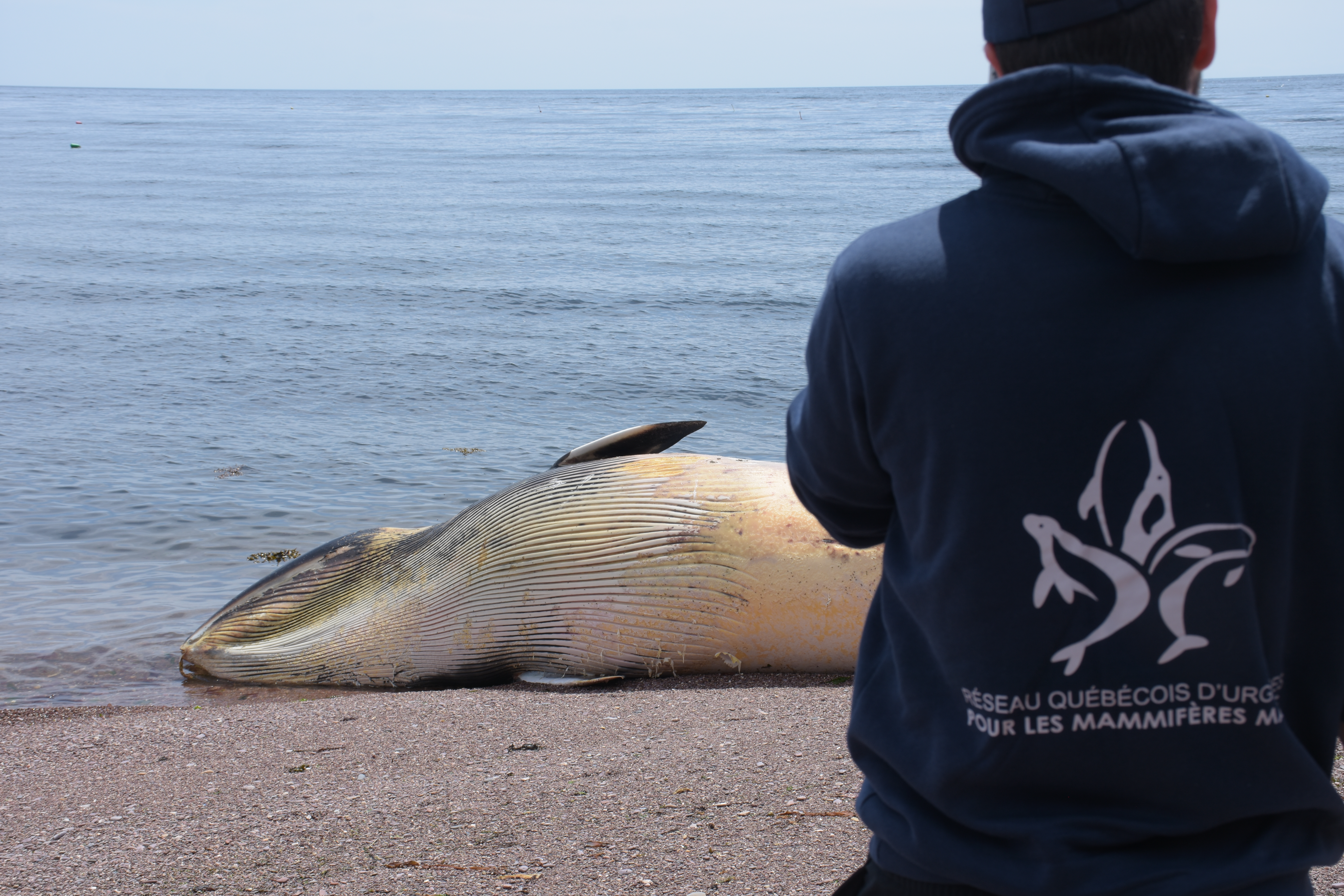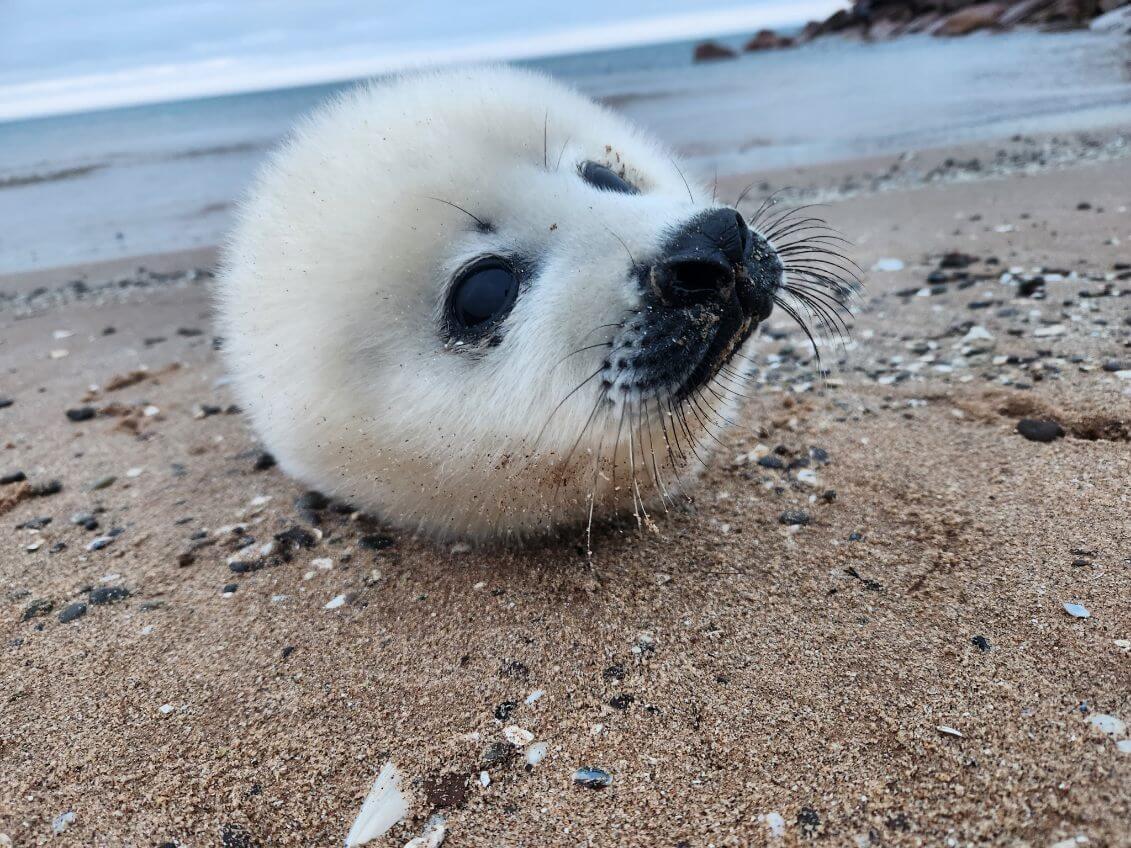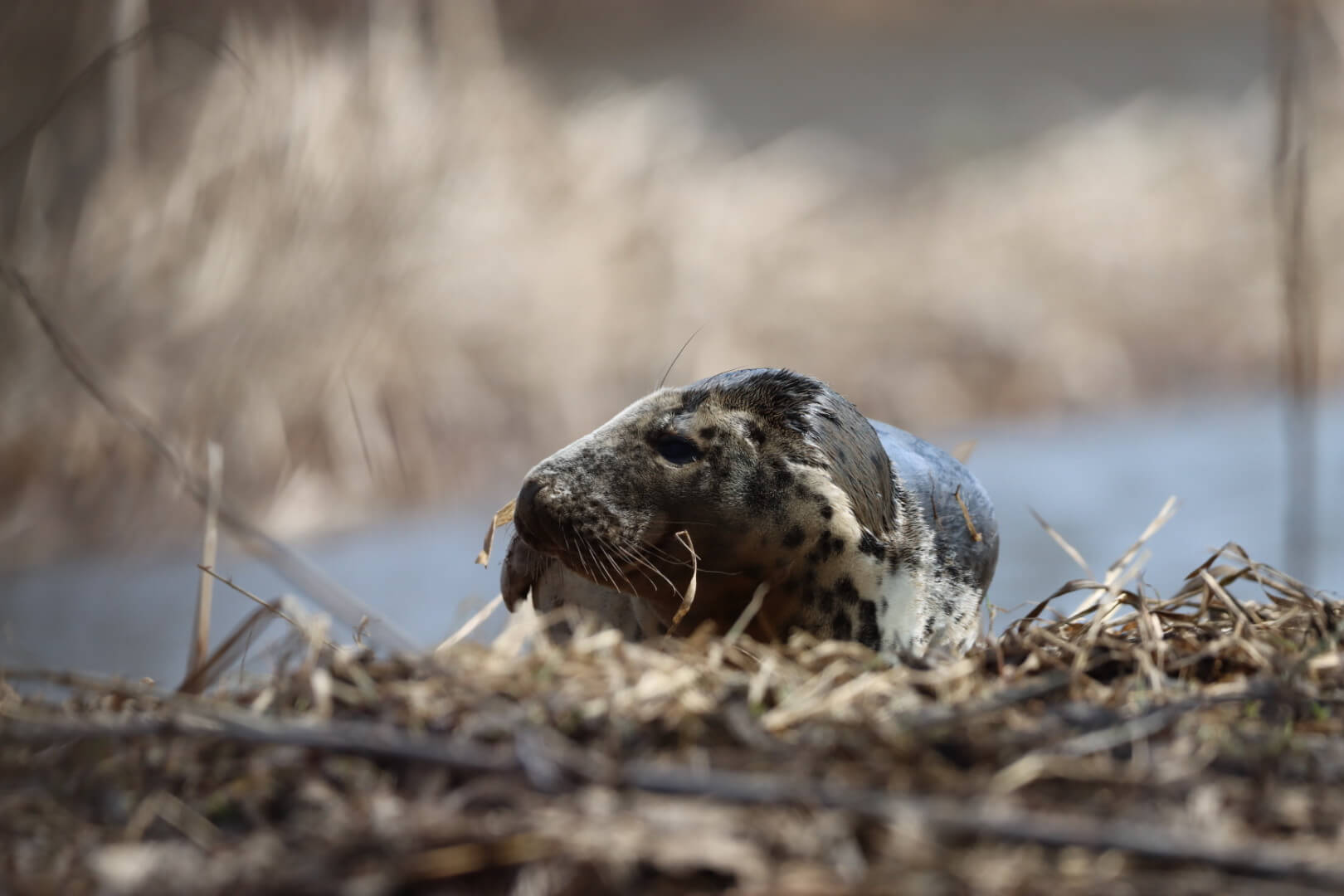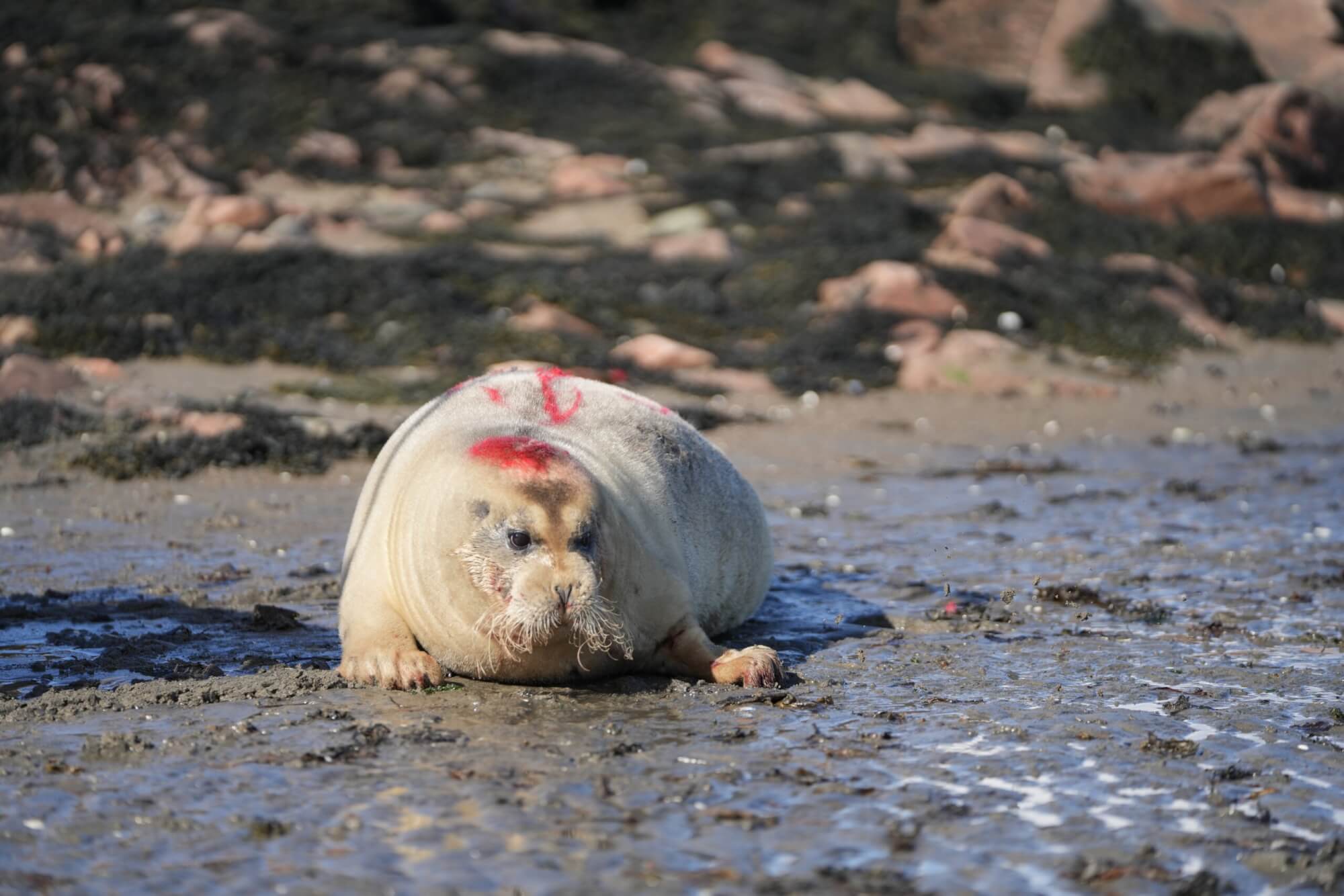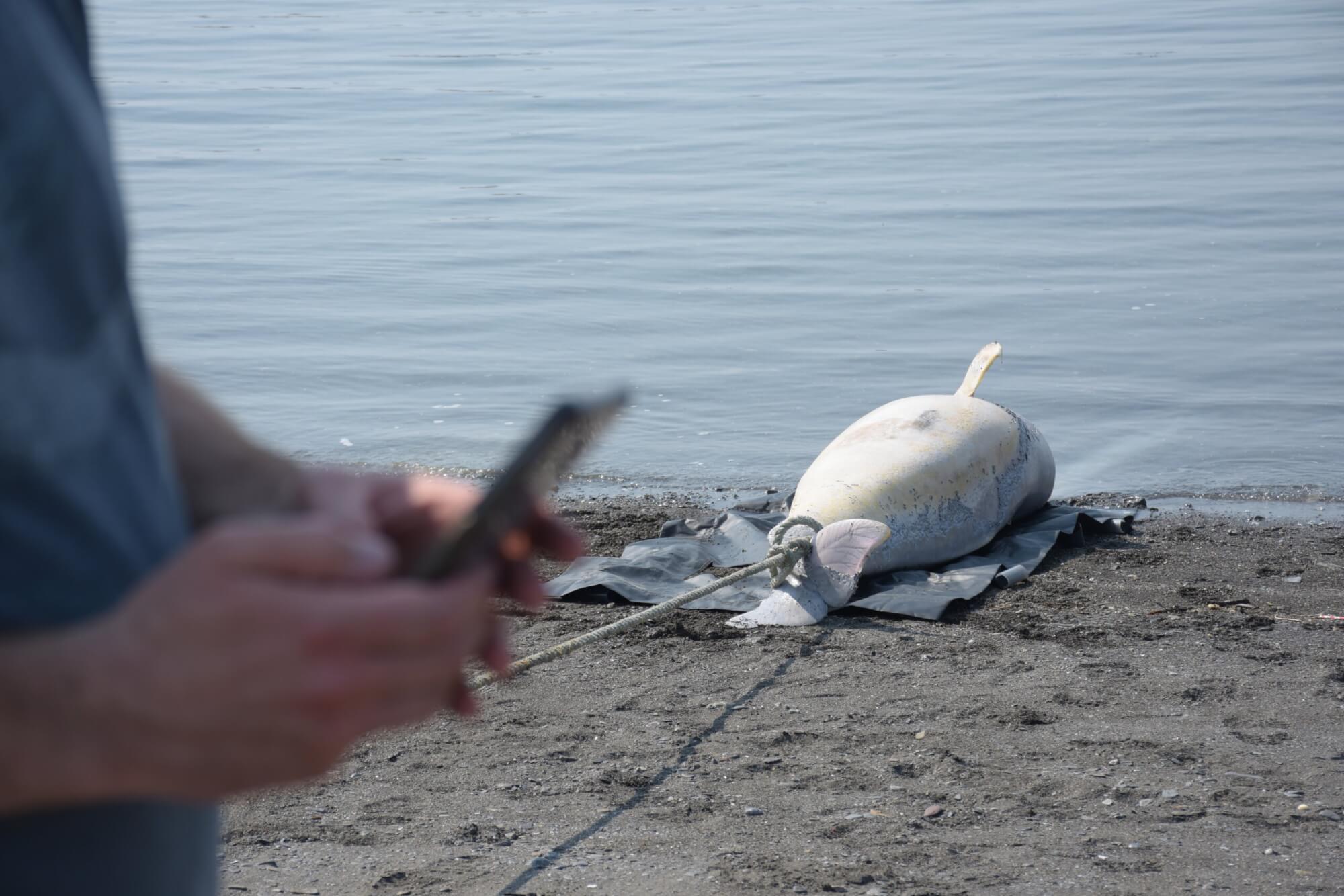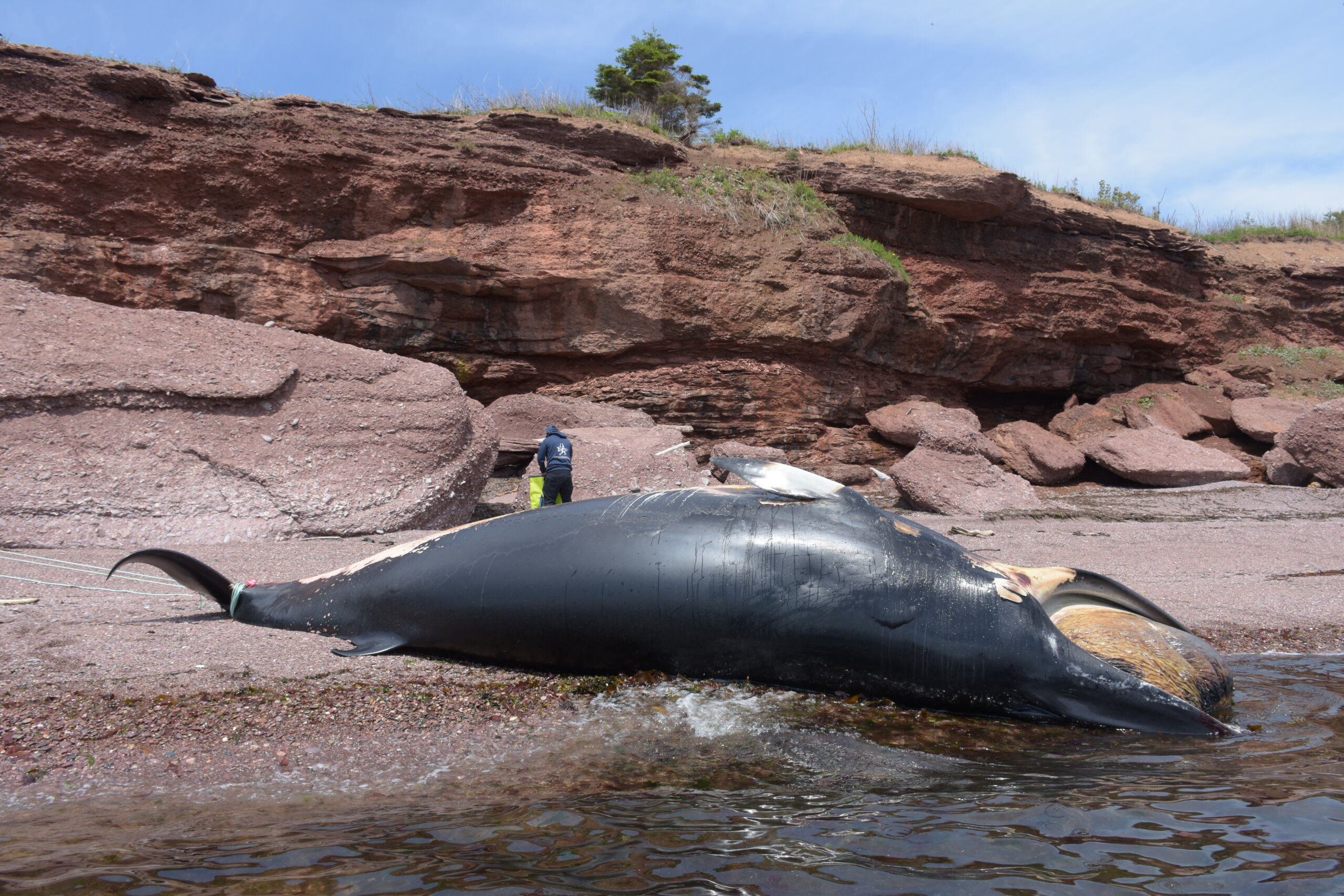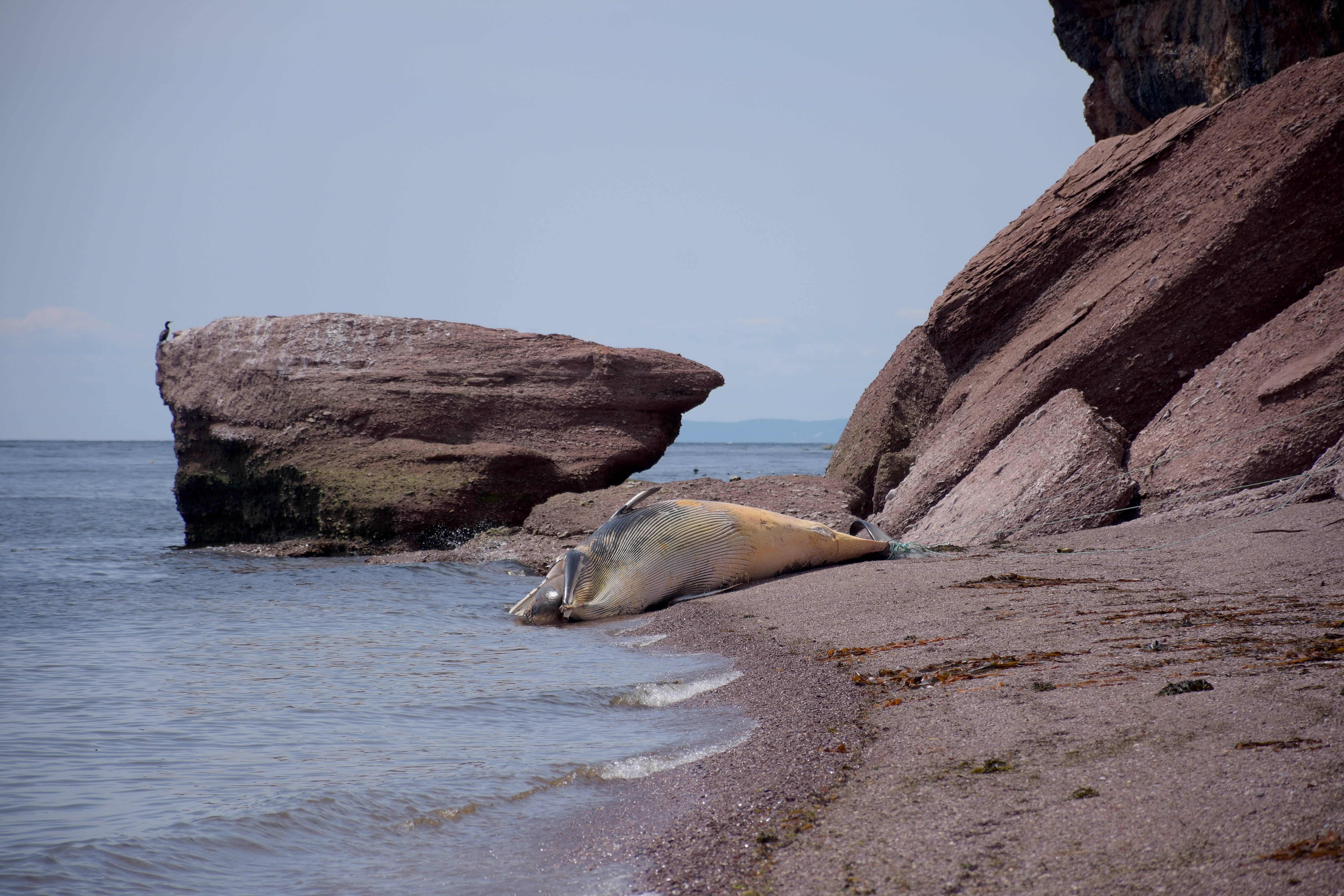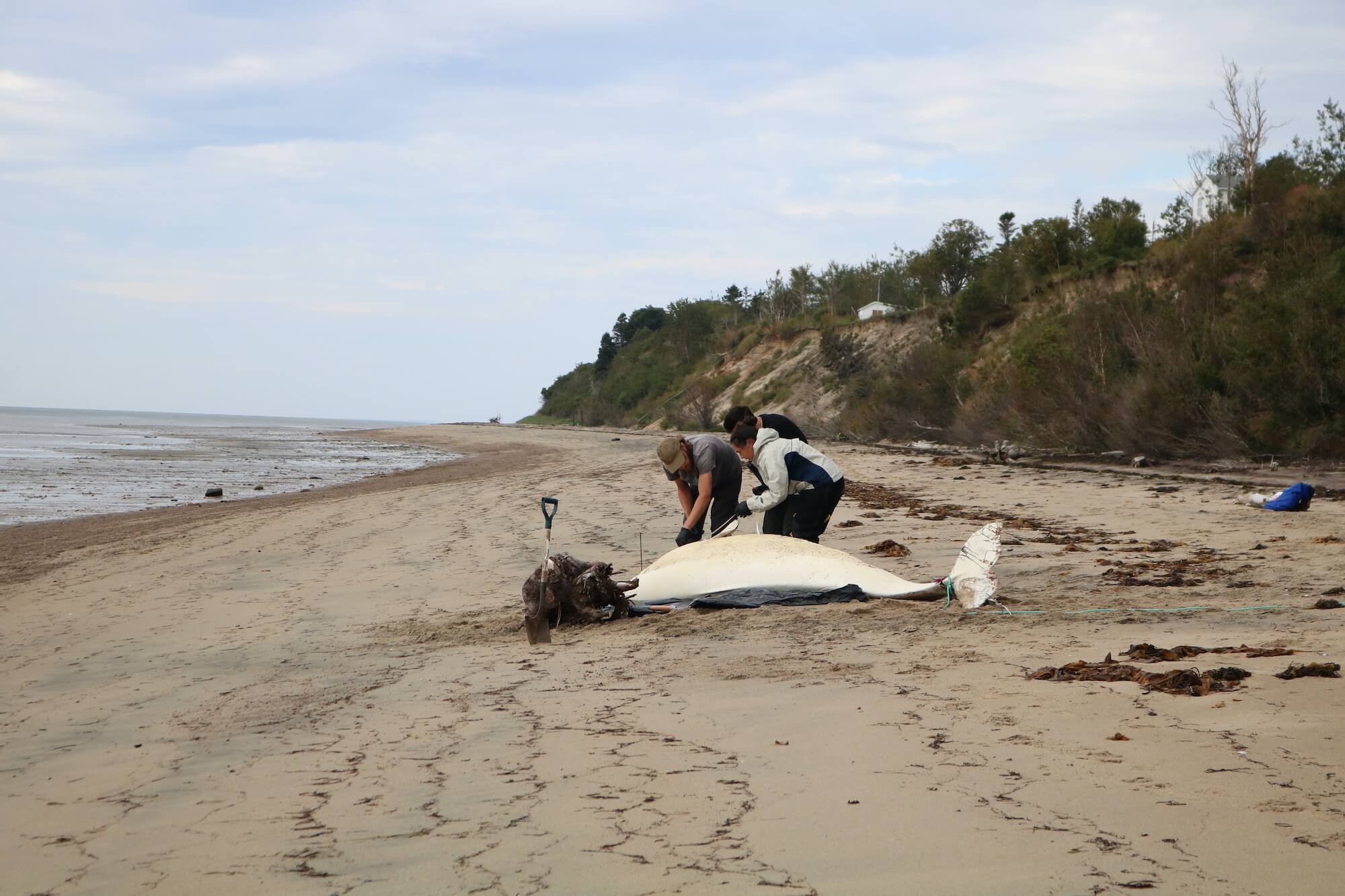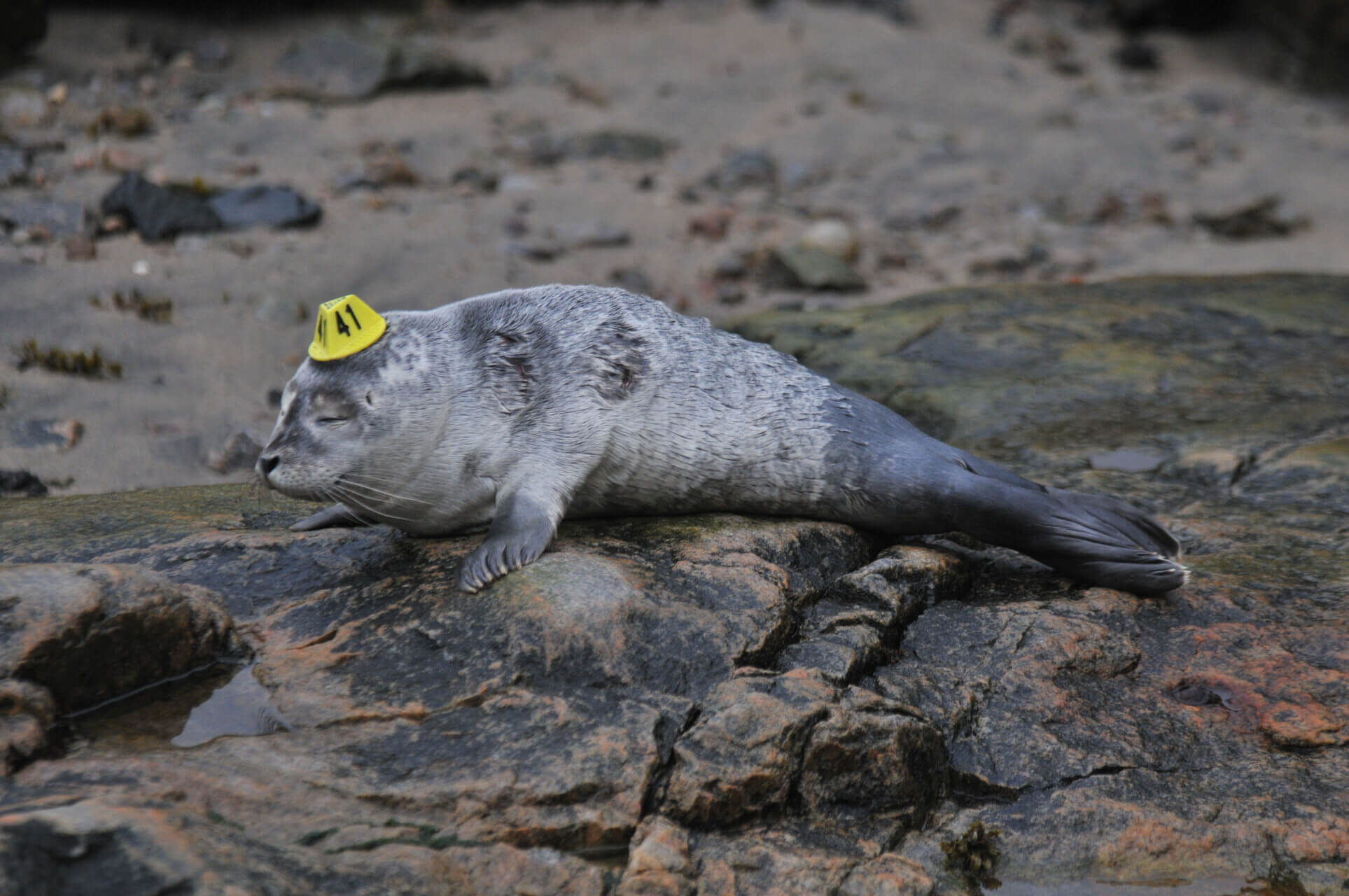The year has been a busy one so far for QMMERN, with numerous cases of harassment and disturbance of seal pups, the presence of a young grey seal in Quebec City, the relocation of a juvenile bearded seal, and beluga carcasses in the Bas-Saint-Laurent region, not to mention two minke whale carcasses washed ashore in a single week!
March madness for seals
Due to the reduced ice cover in the gulf and estuary, harp seals are now giving birth closer to shore, making their pups particularly vulnerable to human contact. The challenges associated with this co-existence were very evident this year.
Since January, more than 30 incidents involving young harp seals, also referred to as “whitecoats,” have been widely discussed in the news and on social media. Some individuals have approached them, even petting or moving them, resulting in several cases of harassment handled by Marine Mammal Emergencies (UMM).
This year’s uptick in these types of cases underscores the importance of collaboration between QMMERN, scientists, and Fisheries and Oceans Canada (DFO) officers to educate members of the public how best to conduct themselves in the presence of these furry little critters. Furthermore, through its monitoring role, UMM ensures that these incidents are rigorously documented and monitored with the aim of better preventing similar occurrences next spring. Indeed, the various documents received by UMM provide complementary data for research projects conducted by QMMERN’s partners to monitor populations and the challenges they face.
A grey seal in the Saint-Charles River
In early April, local residents were surprised to see a young grey seal in the Saint-Charles River near Vieux-Limoilou. The animal may have followed a school of fish upstream to Quebec City, crossing a dam that is normally closed this time of year. This may have been possible due to a breach caused by a missing or damaged breakwater. However, UMM in unable to confirm with certainty where exactly this pinniped got through. Despite its presence outside its normal range, the grey seal was observed in the days that followed upstream of the dam, resting on a small island and actively feeding.
UMM Central, in collaboration with the City of Québec, has been closely monitoring the situation. QMMERN volunteers were mobilized to conduct monitoring and limit disturbances, while UMM Central maintained a direct line of communication with a technician on site. A veterinary consultation confirmed that the seal was in good physical condition and exhibiting normal behaviour. Subsequently, given that the animal was moving around freely, QMMERN continued to monitor its movements and the evolution of its health in order to mitigate the risks associated with its presence in a high-traffic environment. The seal has not been seen since, which suggests that it has left the area.
Successful relocation of a moustached visitor in Portneuf!
On May 1, a report was received for an out-of-habitat juvenile seal being harassed at a boat launch in the Portneuf marina area. This time, public safety issues and concerns for the animal’s well-being led QMMERN to intervene quickly. Decision-making in these types of cases is a delicate balancing act that aims to reconcile expert opinion and public scrutiny.
Under QMMERN coordination, the team from Aquarium du Québec captured the animal with the intent of later relocating it. A thick coat of non-toxic red paint was applied to its back to make it easy to identify if ever it were seen again. It was successfully released on a quiet beach near Tadoussac. This is how the young bearded seal returned to the open sea.
What about belugas?
Nine beluga carcasses have been reported this spring, which already exceeds the total number of carcasses recorded last year for this species. Five of these were recovered by QMMERN’s mobile team and sent to the Faculty of Veterinary Medicine in Saint-Hyacinthe, where a necropsy was performed to ascertain information on the cause of the animals’ death. For the others, samples were taken to acquire valuable data and thereby contribute to population monitoring of this emblematic species of the St. Lawrence.
Two consecutive cases of minke whales
During the week of June 15, two minke whale carcasses kept the UMM mobile team busy! First, a female measuring approximately seven metres long washed up in the Grande-Rivière area. Later, a juvenile male just under four metres long was found on the shores of Sainte-Antoine-de-l’Isle-aux-Grues. Samples of skin, fat, and muscle were taken, in addition to baleen plates for DNA analysis. The roots of the baleen constitute a veritable archive of biological data. These plates are analyzed in a lab to determine the animal’s age and track its dietary history and migrations. They can also be used to estimate the interval between births, thereby helping researchers better understand the individual’s reproductive history.


